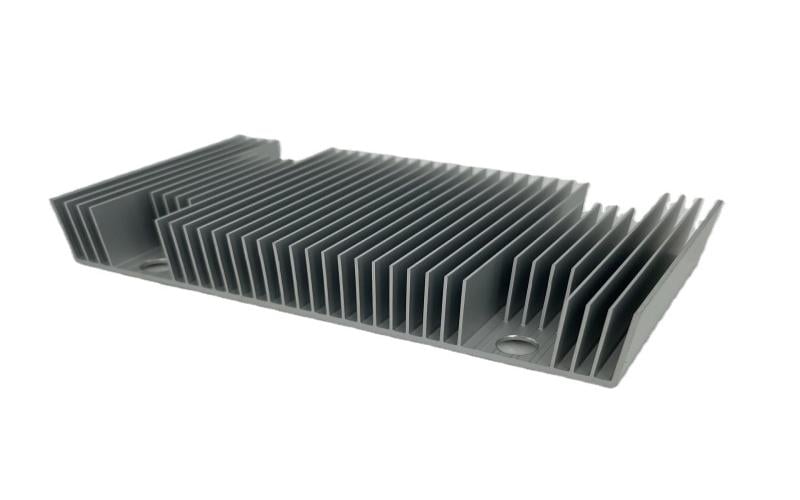Introduction
Heat sinks play a crucial role in dissipating heat generated by electronic devices, ensuring their optimal performance and longevity. Among the various types of heat sinks available, extruded heat sinks have gained significant popularity due to their excellent thermal conductivity and cost-effectiveness. In this article, we will delve into the Extruded Heat Sink Manufacturing Process, exploring its different aspects and providing valuable insights into this essential component of electronic systems.
What is an Extruded Heat Sink?
Before we dive into the manufacturing process, let's first understand what exactly an extruded heat sink is. An extruded heat sink is a passive cooling device designed to absorb and dissipate heat generated by electronic components. It is typically made of aluminum due to its superior thermal conductivity and lightweight nature, which makes it ideal for various applications.
The Extrusion Process
The manufacturing process of extruded heat sinks revolves around a technique called extrusion. Extrusion is a metal forming process in which a billet of aluminum is forced through a shaped opening, known as a die, using a hydraulic press. This process allows for the creation of complex heat sink shapes with excellent precision and consistency.
Design and Die Preparation
The first step in the extruded heat sink manufacturing process is the design phase. Engineers create a detailed design of the heat sink, considering factors such as thermal requirements, size constraints, and aesthetic considerations. Once the design is finalized, a die is prepared. The die is a specialized tool used to shape the aluminum billet during the extrusion process.
Aluminum Billet Heating
Before extrusion can begin, the aluminum billet needs to be heated to a specific temperature. Heating the billet improves its malleability, making it easier to shape during the extrusion process. The billet is typically heated in a furnace until it reaches the desired temperature, ensuring optimal extrusion results.
Extrusion Process of an Extruded Heat Sink
Once the billet has reached the required temperature, it is loaded into the extrusion press. The billet is then pushed through the die using a hydraulic ram, applying immense pressure. As the billet passes through the die, it takes on the shape of the heat sink design. This process is known as extrusion and is repeated for each heat sink.
Cooling and Aging
After the extrusion process, the newly formed heat sinks are cooled to room temperature. This cooling process helps in the solidification and strengthening of the aluminum, ensuring the heat sinks maintain their shape and structural integrity. Additionally, some heat sinks may undergo an aging treatment, which further enhances their mechanical properties.
Cutting and Finishing
Once cooled, the extruded heat sinks are cut to the desired length using specialized cutting tools. This step ensures that the heat sinks are tailored to fit the specific requirements of the electronic device they will be used in. After cutting, the heat sinks undergo various finishing processes, such as deburring, sandblasting, and anodizing, to enhance their appearance and improve corrosion resistance.
Quality Control and Testing of an Extruded Heat Sink
Ensuring the quality and performance of extruded heat sinks is crucial. Therefore, comprehensive quality control measures are implemented throughout the manufacturing process. This includes rigorous inspections, dimensional measurements, and thermal testing to verify that the heat sinks meet the required specifications and performance standards.
Applications of Extruded Heat Sinks
Extruded heat sinks find applications in a wide range of industries, including electronics, telecommunications, automotive, aerospace, and more. They are commonly used in power supplies, LED lighting, computer hardware, audio amplifiers, and other electronic devices that generate significant amounts of heat. The versatility and efficiency of extruded heat sinks make them an indispensable component in modern electronic systems.
Conclusion
The extruded heat sink manufacturing process is a complex yet highly efficient method of producing high-quality heat sinks. From design and die preparation to cutting and finishing, each step in the process contributes to the creation of heat sinks that excel in thermal performance and reliability. By understanding the intricacies of this manufacturing process, manufacturers and consumers alike can make informed decisions and appreciate the importance of extruded heat sinks in maintaining optimal electronic device performance.

